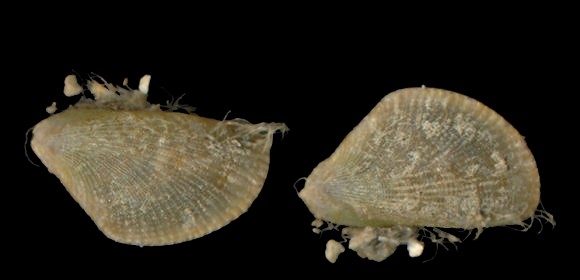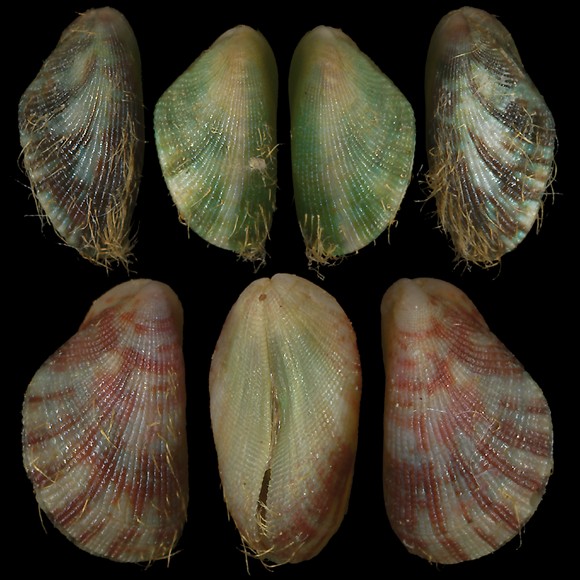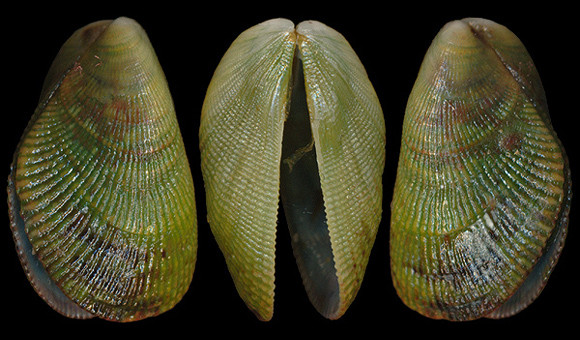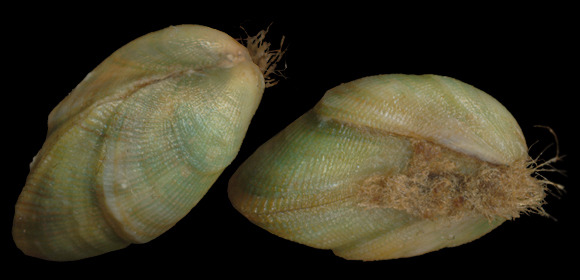

5m deep, attached to Spondylus multisetosus Reeve, Iskenderun körfezi, Hatay, SE. Turkey. 5,5-7mm.

S. cumingii is more triangular in shape, with a finer reticulate sculpture, and is a smaller species. Also, the radial striae of bilocularis can fork, while those of cumingii don’t.
On intertidal reef, Étang Salé, Réunion. 14,5mm.

« Testa ovato-trigona, valde convexa, parva, tenui, tenuissime striato-granosa; septis convexiusculis, margine dorsali vix emarginatis; […] Inhabits the coasts of Annaa island, near the Panama Strait, in the Pacific Ocean, where this species has been discovered by Mr. Cuming, under stones at low tide. » – C. A. Récluz: “Description d’un nouveau genre de coquille bivalve nommé Septifère”, Revue et magasin de zoologie pure et appliquée, 2nd series, vol. I, Paris 1849, via BHL.
3m deep, Kamiros Skala, Ródos island, SE. Aegean. 10mm.